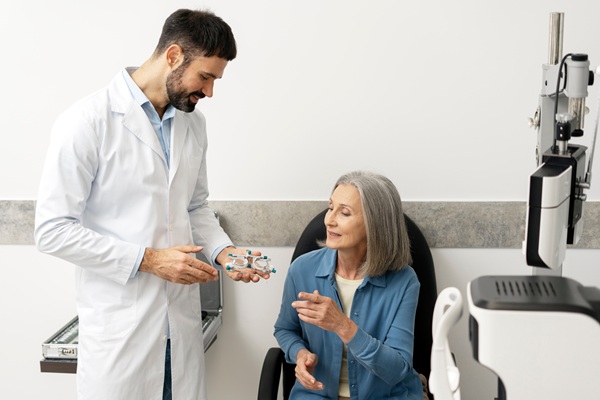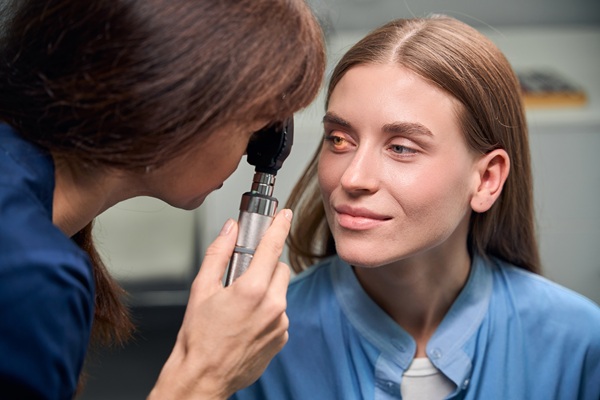Low Vision Treatment

The term low vision refers to a person having 20/70 vision or worse. When a person's vision is this bad, vision aids like contact lenses and prescriptions lenses are not enough to restore the patient's vision. People who need low vision treatments are typically partially sighted – which means their vision is between 20/70 to 20/200 when using corrective lenses. People with vision worse than 20/200 with corrective lenses are considered legally blind.
How people who need low vision treatment receive a diagnosis
Optometrists can easily spot low vision during an eye exam. A patient with 20/70 vision or worse will have a hard time reading letters off a Snellen chart. Low vision is a medical term that refers to a person's sight being 20/70 or worse. Many patients cannot correct low vision completely by using prescription glasses or contact lenses. Patients with low vision can be either partially sighted, or legally blind. Fortunately, there are a few treatments that can improve the quality of life of people with low vision.
What causes low vision
Low vision can be caused by a variety of eye conditions and diseases. Some of the more common culprits include:
- Macular degeneration: This disorder affects the retina, leading to blurred vision and a blind spot
- Diabetic Retinopathy: This occurs when high blood sugar levels damage the tiny blood vessels that supply the retina with blood
- Retinitis Pigmentosa: This condition inhibits peripheral vision and can lead to night blindness. Its first symptoms begin to show up during childhood
- Amblyopia: This leads to blurry vision in either eye or both
- Retinopathy of Prematurity (ROP): This can occur in premature babies
- Retinal Detachment: Damage to the eye leads to the retina separating from its bottom layer. It can lead to vision loss and permanent blindness
- Cataracts: Cataracts can cloud the lens in the eye affecting a person's vision
- Glaucoma: This damages the optic nerve. It can lead to vision loss
- Brain Injuries: Severe brain damage caused by trauma or medical conditions like a stoke can inhibit a person's vision
Low vision treatment options
Given the vast variety of eye disorders and health conditions that can lead to low vision, the treatment options the optometrist typically recommends are those that address the cause of the patient's poor eyesight. These include:
- Injecting the patient's eyes with medication. This can help to prevent vision loss and improve the person's vision
- Surgical treatments. For example, a person with cataracts clouding their lens can improve their vision by having their natural lens removed and replaced with a prosthetic one
- Prescriptions eye drops can be used to treat conditions like glaucoma
- Low vision aids can help to magnify images and improve the patient's vision
- Proper eye nutrition can improve a person's vision. The optometrist can advise the patient about Selenium, Zinc, and other vitamin supplementation
While low vision can be a permanent condition, there are many treatments and aids that allow the patient to still enjoy a good quality of life.
Check out what others are saying about our services on Yelp: Low Vision Treatment in Dallas, TX.
Recent Posts
Red, itchy eyes can affect your everyday comfort and reduce overall well-being. It is important to seek effective vision care from the first sign of irritation. Proper attention to symptoms, underlying causes, and healthy habits ensures stronger long-term eye health and greater day-to-day clarity. Redness and itchiness often stem from several common triggers. These include: Allergic…
New spots or shadows drifting across vision can be unsettling, and sudden changes sometimes require emergency eye care to protect long-term sight. Many floaters are harmless, but others signal serious problems with the retina or internal eye structures. Understanding when floaters are normal and when they point to a true eye emergency helps patients act…
Glaucoma treatment plays a vital role in preserving vision and protecting the optic nerve from further damage. Many patients rely on daily eye drops to manage intraocular pressure, but these medications can sometimes come with side effects. Understanding how to recognize, minimize, and communicate about these effects supports long-term success and comfort with treatment. While…
Progressive lenses offer clear vision at near, arm's length, and far distances without the visible lines found in bifocals. They provide a smooth change in power from top to bottom, which means the eyes can focus comfortably throughout the day. With the right fit and guidance from an optometrist, progressive lenses help reduce eye strain…


